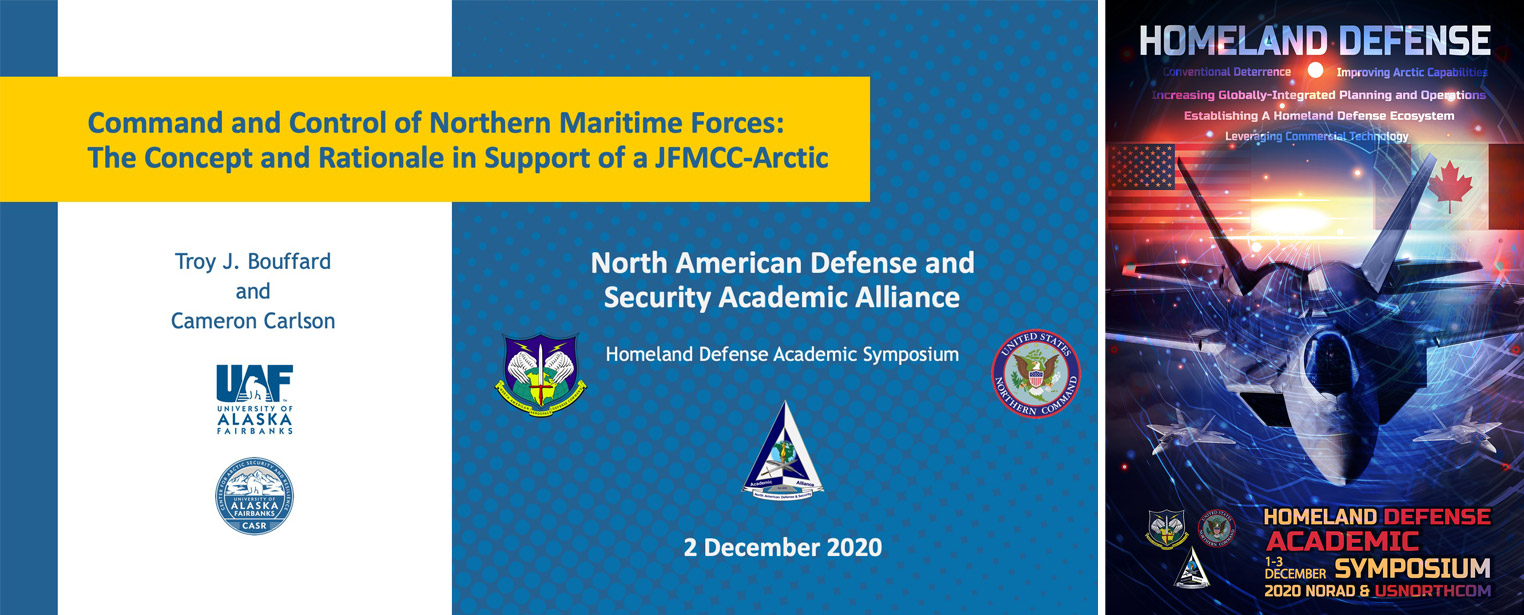Publication: JFMCC

Command and Control of Northern Maritime Forces: The Concept and Rationale in Support of a JFMCC-Arctic
On December 18th, 2019, Senators Sullivan (AK), Murkowski (AK), and King (MA) introduced the “Strategic Arctic Naval Focus Act of 2019.” The bill (S.3080) refers to numerous adversarial aspects associated with national security and the Arctic. Moreover, the proposed legislation indicates what is possibly the biggest gap in defense-related strategies and operational capacity for the north - a severe lack of U.S. Navy surface capability and presence in the Arctic. In his new role as the U.S. Navy Secretary (nominee), Braithwaite stated as a priority that, “as it [the Arctic] becomes more navigable on the surface, we also need to make sure our presence is noted…that requires an adequate-size to be there.” S.3080 exemplifies years of recent efforts to increase awareness of these issues, sometimes in close association with the need for U.S. Coast Guard icebreakers, now known as polar security cutters. It is common knowledge that the Exclusive Economic Zone (EEZ) helps define maritime boundaries for littoral states as well as layered aspects involving international law within these complex political spaces. Less known, are the operational mechanisms behind administration and enforcement, where the U.S. Coast Guard represents the lead agency responsible for upholding the sovereign rights, international law and national policies in open waters. Even fewer studies offer a vision toward a future maritime command and control solution, especially in light of the Russian Arctic military buildup and increasing Chinese interests and behavior regarding the region.
To that end, the research goal for this article is to explore options and rationale regarding the establishment of a joint command to provide command and control over Arctic maritime surface forces. A joint command requires that two or more components of the U.S. armed forces combine to establish and conduct a formal defense arrangement. In the context of this article, it is logically assumed that the primary services leading the joint command would be the U.S. Navy and U.S Coast Guard in what would be known as a joint maritime forces command. In particular, the authors focus examination of an operationally-sized, mid-level joint echelon known as a Joint Forces Maritime Component Command with a presumed Arctic designation (JFMCC-A). The first section will provide a comprehensive discussion of the national authorities and philosophical justification involved with establishing a joint command. The next section will provide major considerations involving the potential structure and purpose of the joint maritime forces command, including the roles of the U.S. Navy and U.S. Coast Guard, opportunities for personnel exchange. The final section will provide initial suggestions toward potential development of a joint maritime forces command. Prior to the thematic sections, the following background section will offer operationally-relevant context and requirements behind the changing Arctic as well as operational circumstances associated with security development.


